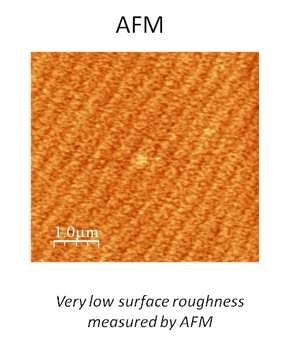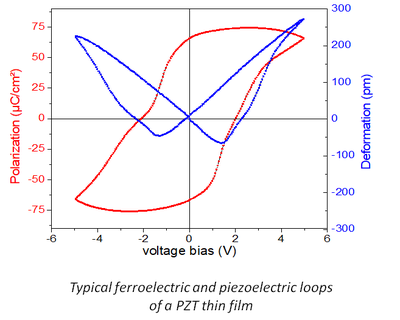Contacts : Sylvia Matzen
PhD students: Léa-Marion Lin
Former PhD students: Loïc Guillemot, Komalika Rani, Stéphane Gable, Alexandre Zing
Context:
Complex ferroelectric oxides exhibit several functionalities (such as high piezoelectric coefficients and switchable polarization) which can be coupled and exploited in various types of devices (such as microactuators, sensors, energy harvesting structures or high-density memories). While electric fields are mostly applied to manipulate devices functionalities, using light could constitute an alternative and wireless approach with limited power consumption and noise in many potential applications. The generation of strain by light illumination is called photostriction. Up to now, previous works have been mainly focused on ferroelectric ceramics and single crystals but their too long response time prevents their integration in real devices. However, ultrafast photostriction effects are expected in ferroelectrics grown in thin films (thickness~10-100 nm).
Project:
The general purpose is to investigate carefully the mechanisms of photostriction which remain not fully understood (including magnitude and time-scale) in ferroelectric thin films integrated in real capacitor geometries, to develop ultrafast light control of strain in functional devices. More precisely, this project aims at clarifying the physical mechanisms behind photostriction in PbZrTiO3 (PZT) thin films, by studying contributions from polarization state and interfaces, in order to optimize the photo-induced strain in devices geometries and develop photostrictive cantilevers. In particular, our work is focused on the effects of thin films chemical composition, thickness and interfaces with electrodes on the devices properties.





Publications : Here
Tuning Ultrafast Photoinduced Strain in Ferroelectric Based Devices, S. Matzen, L. Guillemot, T. Maroutian, S. K. K. Patel, H. Wen, A. DiChiara, G. Agnus, O. G. Shpyrko, E. E. Fullerton, D. Ravelosona, P. Lecoeur, R. Kukreja, Advanced Electronic Materials 5, 1800709 (2019).
We have recently reported a tunable ultrafast manipulation of strain by light in PZT devices. Through material and polarization state engineering, one can actively induce either contraction or expansion of the material, and also tune the magnitude of its photostrictive response. These results have important implications for the optical control of functional materials properties.

Collaborations:

Fundings :

